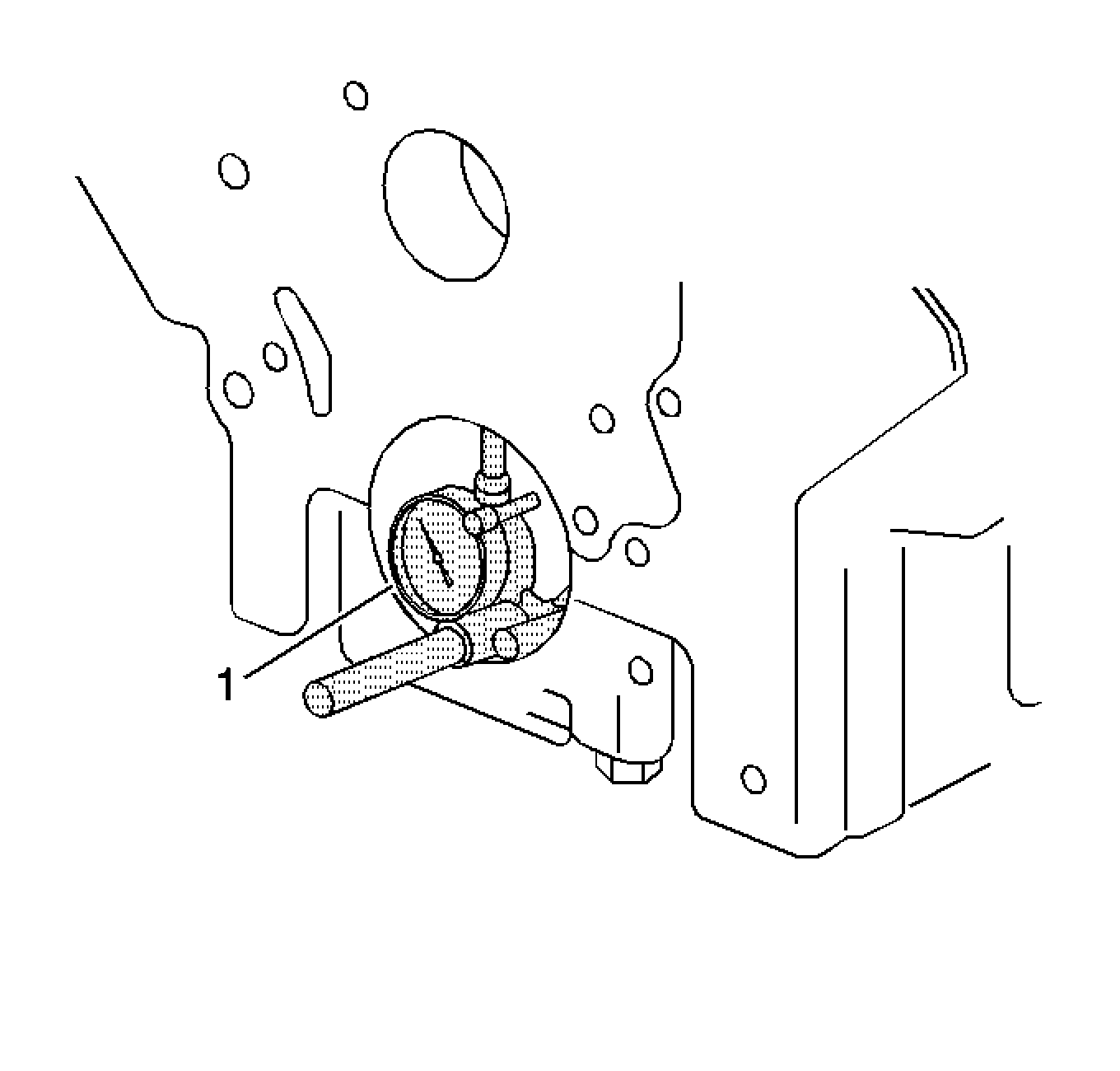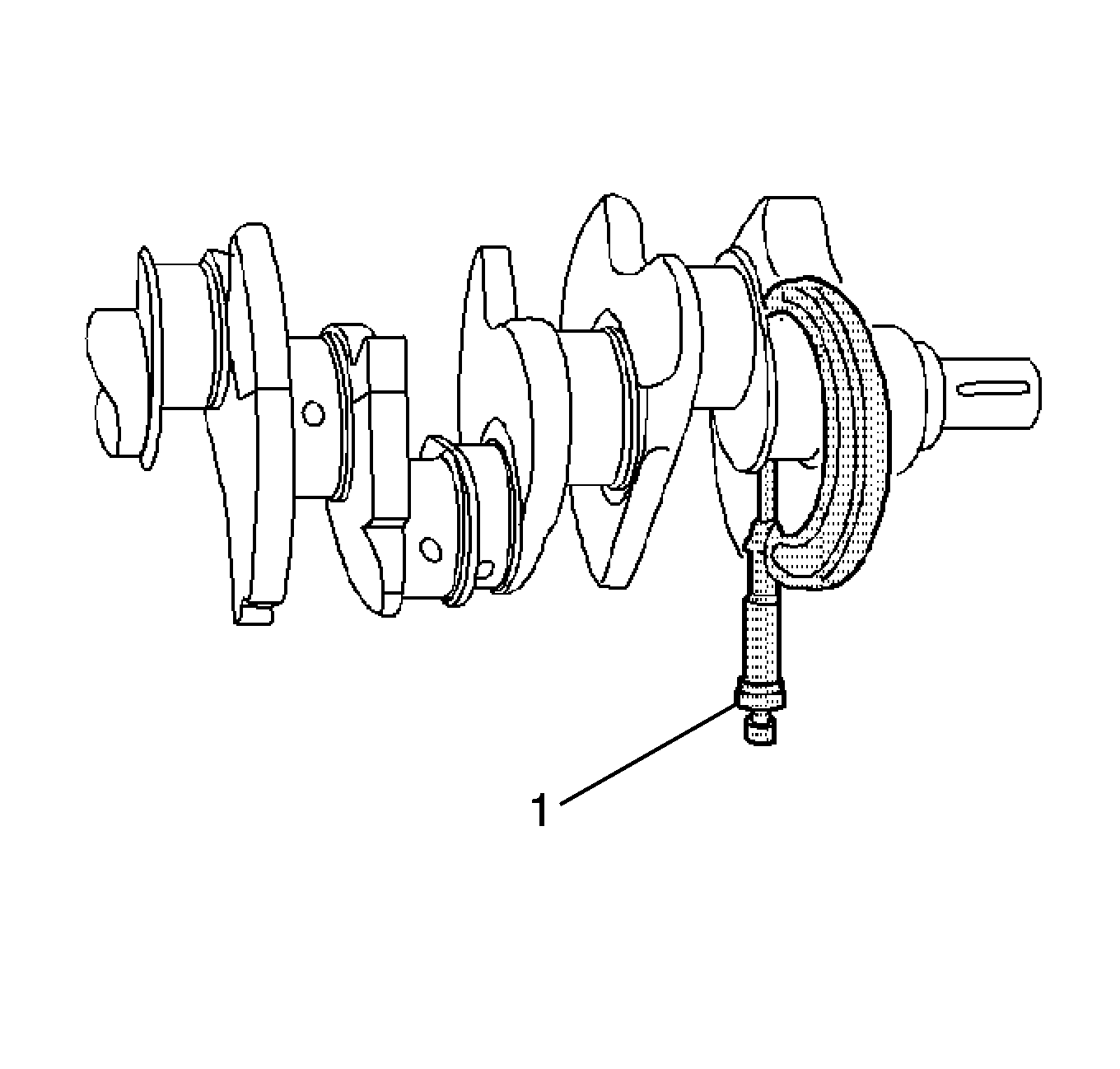Special Tools
| • | EN-8087 Cylinder Bore Gage |
| • | EN-45059 Angle Meter |
For equivalent regional tools, refer to Special Tools.

Note: If crankshaft bearing failure is due to other than normal wear, investigate the cause. Inspect the crankshaft or connecting rod bearing bores.
Inspect the connecting rod bearing bores or crankshaft main bearing bores using the following procedure:
| • | Tighten the bedplate to specification using the EN-45059 angle meter . |
| • | Measure the bearing bore for taper and out-of-round using the EN-8087 gage (1). |
| • | No taper or out-of-round should exist. |
Bearing Selection
Measure the bearing clearance to determine the correct replacement bearing insert size. There are 2 methods to measure bearing clearance. Method A gives more reliable results and is preferred.
| • | Method A yields measurement from which the bearing clearance can be computed. |
| • | Method B yields the bearing clearance directly. Method B does not give any indication of bearing run-out. |
Method A

Note: Do not mix inserts of different nominal size in the same bearing bore.
To measure bearing clearance using Method A, use the following procedure:
- Measure the crankshaft bearing journal diameter with a micrometer (1) in several places, 90 degrees apart. Average the measurements.
- Measure the crankshaft bearing journal taper and runout.
- Install the lower crankcase and tighten the bearing cap bolts to specification.
- Measure bearing inside diameter (ID) in several places 90 degrees apart, average measurements.
- Subtract journal measurement from bearing ID measurement to determine clearance.
- Determine whether clearance is within specification.
- If out of specification, choose different inserts.
- Measure the connecting rod inside diameter in the same direction as the length of the rod with an inside micrometer.
- Measure the crankshaft main bearing inside diameter with an inside micrometer.
Method B

To measure bearing clearance using Method B, use the following procedure:
- Clean the used bearing inserts.
- Install the used bearing inserts.
- Place a piece of gaging plastic across the entire bearing width.
- Install the bearing caps.
- Install the bearing cap bolts to specification.
- Remove the bearing cap, leaving the gaging plastic in place. It does not matter whether the gaging plastic adheres to the journal or to the bearing cap.
- Measure the gaging plastic at its widest point with the scale (1) printed on the gaging plastic package.
- Remove the gaging plastic.
Caution: In order to prevent the possibility of cylinder block or crankshaft bearing cap damage, the crankshaft bearing caps are tapped into the cylinder block cavity using a brass, lead, or a leather mallet before the attaching bolts are installed. Do not use attaching bolts to pull the crankshaft bearing caps into the seats. Failure to use this process may damage a cylinder block or a bearing cap.
Note: Do not rotate the crankshaft.
